
I love this piece because it’s ornate by 18 views of Rome. The main places of pilgrimage are depicted in many cases when the crowd attends religious celebrations. Therefore it is particularly interesting for Rome history lovers.
 This wonderful ebony piece of furniture can be seen in the ‘Museo di Roma’ located just at one end of the splendid piazza Navona. I love this piece because it’s ornate by 18 views of Rome. The main places of pilgrimage are depicted in many cases when the crowd attends religious celebrations. Therefore it is particularly interesting for Rome history lovers. 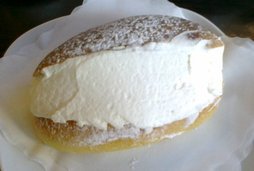 The 40 days period of penance preceding Easter in the past was announced by great religious functions, bells ringing and missionary preachers reminding the romans about the need of repentance. Everyone was expected to attend mass at 6.00am on Wednesday ashes and many were still wearing the carnival masks. The 40 days of Lent was a period of severe food restrictions, no meat was allowed and only sick persons with special permissions were allowed not to respect the prescribed diet. Theatrical performances and paries were forbitten. Romans love the pleasures of life, therefore during lent they started treating themselves with the ‘Maritozzi’: a particular kind of pastry. You can still find maritozzi all year around in coffee shops and pastry shop. The maritozzi are usually cut in the middle and stuffed with whipped Cream. Absolutely delicious 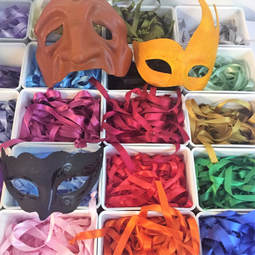 I’ve been to a Masks atelier in Venice where all phases of masks making were explained. I’ll try to make a mask in the future, in the meantime I’ll share info with you. You’ve to be an artist since the first step is making a clay sculpture of the mask. When its dry and its surface is smoothed you have to pour a mixture of liquid plaster gypsum on the model to create the cast you’ll use to produce the masks. 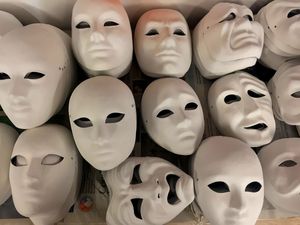 Carnival time was a period of excesses. The protagonist was the people: ‘king for a day’, who had permission to party and subvert the rules they were always submitted to. The Carnival event ended on Tuesday night with the ‘Corsa dei Moccoletti’: everyone was in the street running while holding a candle, and trying at the same time to blow out the candles of the others keeping alive theirs. A cruel popular entertainment occurred on monte testaccio, the bloody ‘ Ruzzica de li Porci’ –run with the pigs. Pigs with carts rolled down the hill and at the bottom of the slope the spectators competed to get what was left of the animals. This tradition was abolished by Pope Clement IX in 1667.  Since medieval times the Popes organized parties and events providing leisure time before the restrictions of the Lent. The venue was on the potsherds hill of Monte Testaccio. The most popular era of roman carnival started with the venetian pope Paul II (1464-1471 ) who introduced major celebrations held along the Corso road and piazza Venezia. He transferred his residence in piazza Venezia and ordered the festival to be moved there. There were various bizarre and cruel competitions and races taking place along the one mile long Corso avenue that involved people and animals. The end was in Venetia square and the prize was a Palio: a precious banner or a cloth given to the winner 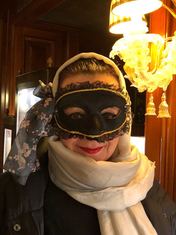 Italy is the birthplace of carnival celebrations and the feast is popular and celebrated all over Italy. The origins of carnival dates back to the ancient civilizations. In Egypt groups of people, wearing masks attended the celebrations in honor of the goddess Isis. In Greece, Dionysian celebrations were moments of debauchery and jokes, but it is the Roman Saturnalia feast that inspired the medieval carnival parties. The Saturnalia was the celebration of god Saturn dedicated to fertility and the breaking of social rules., orgiastic festivals with public entertainment, dances and masks occurred for several days. 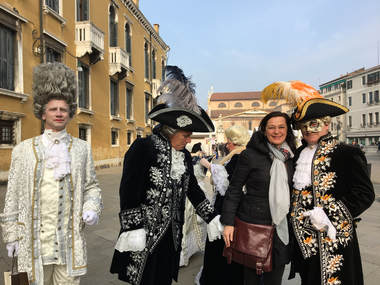 It’s the period of leisure and fun before the Lent. The origin of the word is ‘carmen levare’, (remove the meat), in fact, no meat is allowed during the 40 days of Lent. Italy is the birthplace of carnival celebrations and the feast is popular and celebrated all over Italy. It begins on Fat Thursday and end on Fat Tuesday, the day before Ashes Wednesday. The carnival dates vary according to Easter time. In 2018 it will start on February 8th and end on Tuesday 13th. 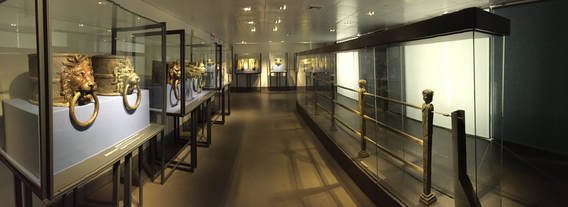 Two imperial ships of Caligola were found under the lake of Nemi and the bronze fittings are the most important set of objects left. The first group of objects was acquired by the Museo Nazionale Romano in 1906, following the explorations undertaken in the lake by the antiquarian Eliseo Borghi on behalf of the Orsini family, while the second group of art works was found in excavations done between 1929 and 1932. |
My BlogThis blog is aimed to share with you my Roman experiences, reflections and researches. Categories
All
Archives
November 2019
|
|
Ilaria Marsili MRSLRI67H50H501J . All Rights Reserved.
|